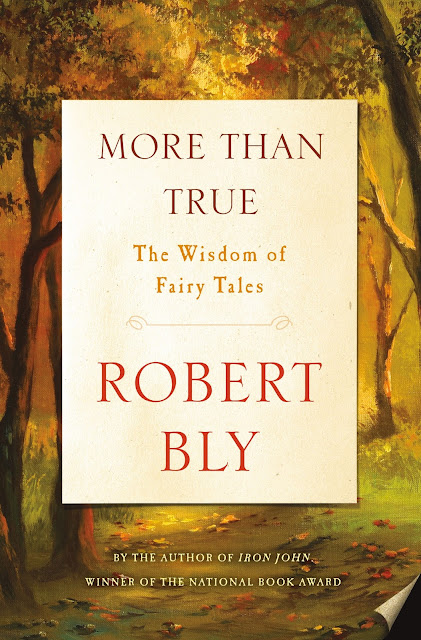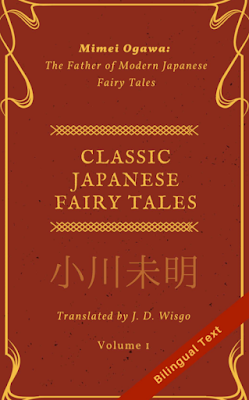“More Than True: The Wisdom of Fairy Tales” by Robert Bly (published 2018)
At first “More Than True: The Wisdom of Fairy Tales” by
Robert Bly (2018) may seem like an over-analysis of children’s stories. Even taken
as the psychologically dense stories for adults that they really are, Bly’s
writing is a bit jarring at first, to the point of one wondering whether his
opinions have come out of unreflective musing, or the thin air, being too
far-fetched to be graspable. But rest assured – the man knows damn well that he
is right in his thoughts on the power and depth of these tales as pieces of
cultural history worth the time of true poetic examination. Readers will pick up
on this feeling of righteousness presented within the pages. Slowly, Bly no
longer is seen as the crazy professor but instead, a sage of interpretation,
believable if only because of an honest to goodness obscurity that finally brings
a special common sense grounded in critical thought. Simply, it is hard to
detect any of Bly’s ideology at work here – which makes this the perfect book
for studying fairy tales.
Bly is particularly interested in the uncanny, the dark, the
strange, and the obscure. A sophomoric understanding of fairy tales will
deconstruct each story as one with an underlying moral code. However, Bly is
smarter than this. What makes these tales (six tales in particular) so
fascinating to Bly is their commentary on fear. What are humans not in touch
with? And what are the consequences? Bly believes that people tend to forget,
neglect, or run away from the “raw” stuff of being alive - and when this
happens something gets lost – many times something like our inner being, or our
soul.
The six tales Bly writes about in “More Than True: The
Wisdom of Fairy Tales” include “The Six Swans”, “The Frog Prince”, “The
Lindworm”, “The Dark Man”, “One-Two Man”, and “The White Bear King Valemon”. His
thoughts are idiosyncratically written - which makes them utterly interesting –
even as he reflects back on historicity.
In his analysis of “The Six Swans”, Bly reflects on Celtic
stories, writings by W.B. Yeats, Chinese folklore, and Greek mythology to make
his points. For Bly, each character of the story may represent a different
aspect of the psyche or body. Bly is particularly sensitive to femininity and
masculinity and what society has had these “roles” perform or do for a higher
cause. Reflecting on the story of “The Six Swans”, he writes:
“If we imagine that the task of the soul is to help the
young male become human again, recover his ground, that is to help the young
male descend from his compulsive, rather heartless spirituality so that he can
commit himself to hunting-gathering, or agriculture, or fatherhood, or
husbandhood, or religious fierceness, or love itself, the task is like living
for six years without talking or laughing, and it is like making entire shirts
from delicate blossoms.”
In his chapter on “The Frog Prince”, Bly understands the “last
straw” of the princess throwing the frog against the wall as a sign of completion.
Patience is a task that gets a well-earned reward. In this case a prince:
“Her blow against the frog’s suggestion had the effect of
the frog’s becoming human. When we really have lived with the hidden and buried
and cold-blooded, when we see who we are and understand something of what it
means to have pockets of the prehumen in our hidden nature, then finally it’s
possible to say, ‘Okay, you are always there. But you have to stop trying to
have it all your way. I’ve had enough.’… Then even the cold-blooded alien part
of ourselves gets a bit more human.”
By far one of the most striking revelations made by Bly is
in his understanding of the “The Lindworm”. The only girl who breaks the curse
of the snake brother is the one who is willing to do the dirty, tough work of
soaking and scrubbing that earthly animal until all layers of his skin are shed
– and everyone knows what is underneath. Another reward – of course, a handsome
prince. But being able to feel comfortable with the fact that there was
something reptilian and slimy that needed to be given some care, and then
actually giving it, is the task. Only a person who undergoes giving that care could appreciate the final result, so says Bly.
The last three chapters in the book are phenomenal and worth
reading many times over. It cannot be stressed enough how unique Bly’s analyses
are and how wonderfully written. He includes lines from his own poems which
help to illuminate the tales as well as strengthen his own opinions, and he includes lines
from all sorts of poetry that has moved him. His approach is holistic and respectful of spirituality
and religion in its major and more obscure forms. “More Than True: The Wisdom
of Fairy Tales” provides not only knowledge of the Western and Eastern
humanities but also keen insight on daily living and mindfulness, without ever
being trite.




Comments
Post a Comment